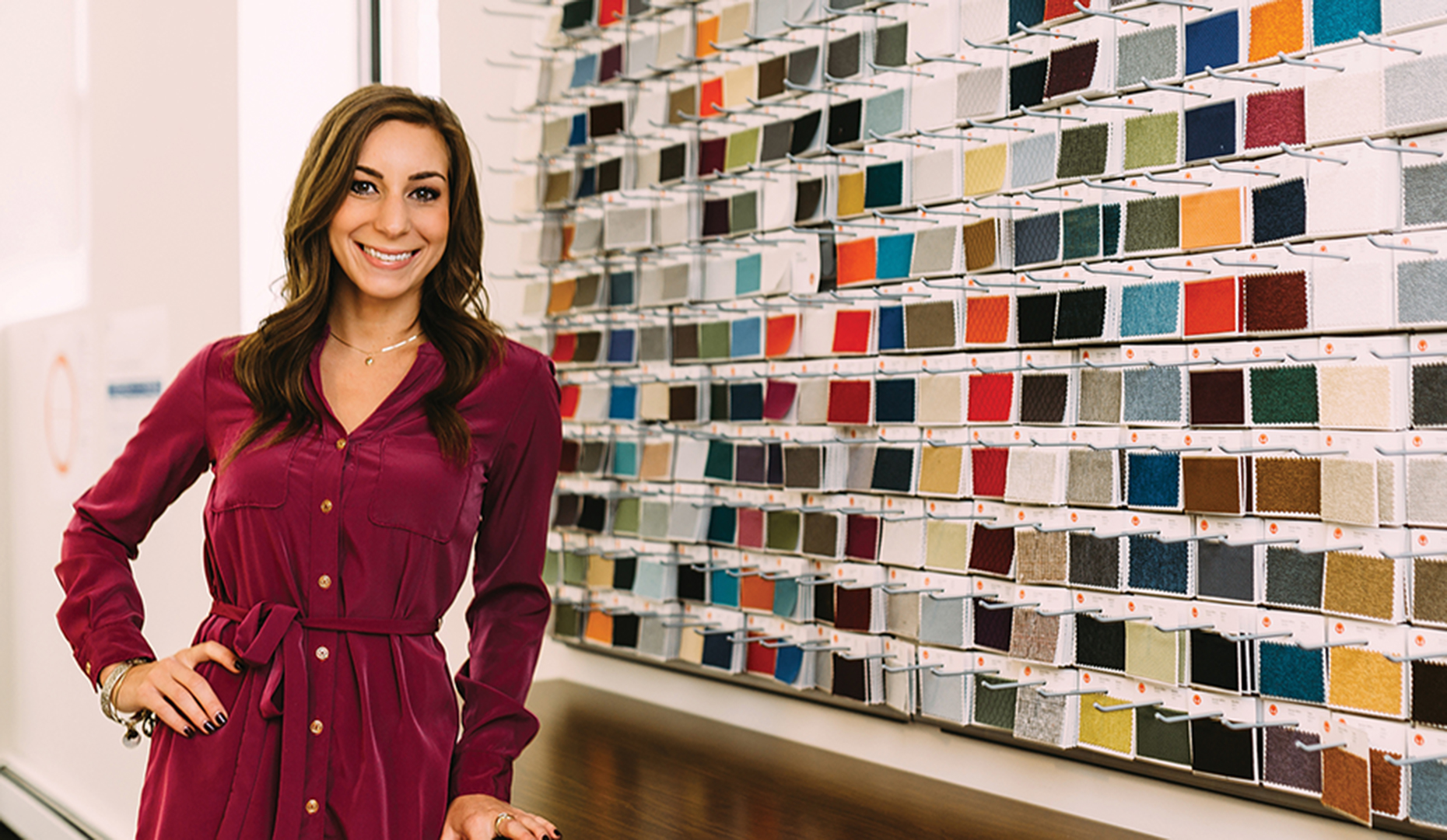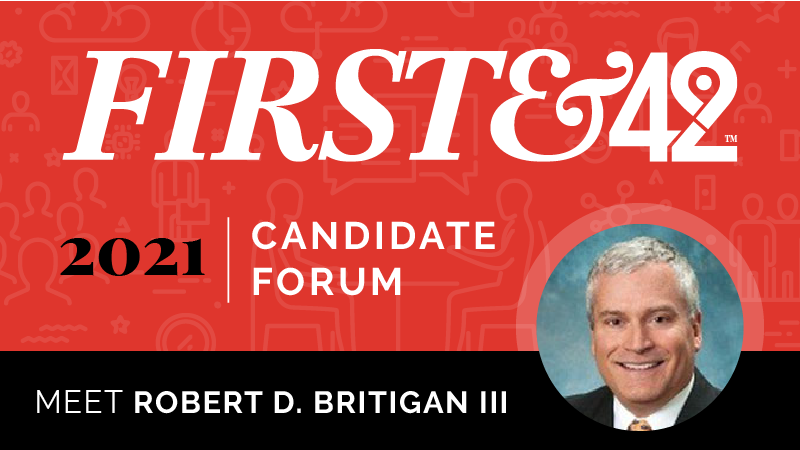A Conversation with Natalie DePerro, Interior Designer at MarxModa.
What does an interior designer do?
An interior designer takes a client’s request for spaces in buildings, and gives them a great solution for furniture for their interiors while keeping in mind the client’s vision and mission.
What does your typical day look like?
My typical day is usually spent in the office working on space planning, furniture designs, and furniture layouts. I do a lot of budget pricing for customers and furniture options—customers want to see what a lobby, an office, or a collaboration area could look like. I do renderings, which are a 3D visual with color, lighting, furniture, and architectural features that show what a space will potentially look like. I also do a lot of research online about furniture, contacting reps, and contacting other designers.
Why did you decide to become an interior designer?
I knew I was really creative, and I really liked art, color, using my hands, and problem solving. So, I decided to use my design skills and creative traits to make a living.
What do you find most rewarding about your job?
What I find most rewarding is that I get to be creative and have a lot of fun in my job, while helping people. It’s a great way to give back to the community. Whether I’m helping a corporate company or a small business, I can give back to society with a great design layout for a space by putting creative thought into it.
What sparks your interest in interior design?
Really fun and funky and inviting spaces that make someone want to eat, play, or work there.
What questions do you ask yourself when you see a space?
What drives people to want to be in a place rather than that space’s competitor? What’s really interesting about that place? What draws people to interiors? Why do they gravitate towards those places?
Everyone has to start somewhere. What was your first job?
My first internship was at Ethan Allen on West Main in Kalamazoo. It’s a residential company. They’re global. That was my first internship, which is different than commercial—I do commercial now. I had a few internships in between, and then I was hired at MarxModa.
What’s your favorite part about being an interior designer?
When I’m at work, I don’t feel like I’m working. I am having fun. I am enjoying what I’m doing. I’m in a creative environment, and I get to use creative thoughts and processes. I’m having fun looking at furniture, researching, and being able to help people. What excites me the most is seeing my design go from 2D and 3D computer renderings transferred to the real deal. When I look at the installation onsite it’s a really good feeling.
Where do you find inspiration for the designs that you create?
Besides using design literature like magazines and online literature or books, I enjoy traveling and visiting new public spaces. to see what other spaces look like or what other designs have in them that are interesting. It inspires me to be in a new environment that I haven’t been in before. Recently, I went to Des Moines, Iowa to visit my brother. I saw what was going on there, and what drew people to restaurants and bars and the breweries. It’s still the Midwest, but to see what designs are looking like there versus West Michigan, or what trends are paralleling each other here versus there, was really inspiring.
What skills are important for a successful career in interior design?
You definitely need to be detail-oriented, organized, and able to visualize in your head from 2D to 3D what something is going to look like. You also need to have a sense of awareness of a person’s surroundings, and how they interact in an environment, and how someone uses that environment.
What is your favorite creation or project that you’ve worked on?
My favorite creation or project was Landscape Forms, at its Midlink location. The company has a factory there that produces furniture and outdoor lighting, with offices too. It was really fun to be able to collaborate with them and work with other designers at the client. I also was able to see the finished product. That was really cool.
What is the biggest lesson that you have learned since the beginning of your career?
Read and reread what you’re doing, whether it’s price books or an email or drawings or the fine print. When it comes down to the end of the day, this is your design. You have to be able to back up and have research or a reason for why you’re doing something, and proof of why you think what you’re doing is a good decision or a good design idea.
How do you balance creativity with business?
You definitely have to respect and be aware of your customer’s mission or style and what their business is. For example, think about a restaurant: You have fine dining restaurants and have breweries. They’re both restaurants, but their styles are different. One’s style may include white tablecloths, and the other’s may be a hangout for friends. You have to respect who you’re working with. You have to be aware of your client and respect their design style. I’m not going to suggest a crazy funky design to somebody if it doesn’t fit their company or what they do.
What would be your dream project?
It would be awesome to work on a multi-use space that has offices and retail combined with Perkins+Will. It would be really fun to have a place like that in downtown Kalamazoo—a building that has different suites for different tenants. It would be mostly office space, but also have a central plaza or hub that brings people together, whether it’s a café or a really interesting lounge area with collaborative seating, some retail, or some more service-type businesses also.
How do you keep your creativity sharp?
You have to stay on top of what just came out from different manufacturers—what’s the newest product, the latest technology, and how it’s being integrated into furniture. It’s being involved in the design world and the design community.
If you could be creative in another space, what would that be?
A dance teacher. I used to dance growing up, and in college I taught a couple classes. I had to be creative because you have to think of the dance moves and the steps to teach the students. You have to be creative with the dance you’re creating. The more people you have, the more interesting it can be.
What advice would you give to an aspiring interior designer?
Keep a fine line between keeping everything that you create, and not becoming a hoarder. Whether it’s a scratch piece of paper, something you wrote on a napkin, a textbook, a floor plan, a fabric sample, keep everything because you will want it someday. Stay organized, because things will resurface that you will need to reference.




